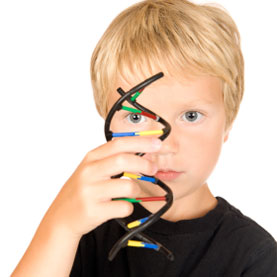Do you work with children with autism? If so, this newly revised course is for you!
 Autism Spectrum Disorder in Schools identifies DSM-5 diagnostic changes in the ASD diagnostic criteria, summarizes the empirically-based screening and assessment methodology in ASD, and describes a comprehensive developmental approach for assessing students with ASD.
Autism Spectrum Disorder in Schools identifies DSM-5 diagnostic changes in the ASD diagnostic criteria, summarizes the empirically-based screening and assessment methodology in ASD, and describes a comprehensive developmental approach for assessing students with ASD.
The DSM-5 conceptualizations of autism require professionals to update their knowledge about the spectrum. This course will prepare you to recognize the presence of risk factors and/or early warning signs of ASD and be familiar with screening and assessment tools in order to ensure that students with ASD are being identified and provided with the appropriate programs and services. Course #30-69 | 2013 | 44 pages | 40 posttest questions
CE Information:
Professional Development Resources is approved by the American Psychological Association (APA) to sponsor continuing education for psychologists; by the National Board of Certified Counselors (NBCC) to offer home study continuing education for NCCs (Provider #5590); by the Association of Social Work Boards (ASWB Provider #1046, ACE Program); by the National Association of Alcoholism & Drug Abuse Counselors (NAADAC Provider #000279); by the American Occupational Therapy Association (AOTA Provider #3159); by the Commission on Dietetic Registration (CDR Provider #PR001); by the California Board of Behavioral Sciences (#PCE1625); by the Florida Boards of Social Work, Mental Health Counseling and Marriage and Family Therapy (#BAP346), Psychology & School Psychology (#50-1635), Dietetics & Nutrition (#50-1635), and Occupational Therapy Practice (#34); by the Illinois DPR for Social Work (#159-00531); by the Ohio Counselor, Social Worker & MFT Board (#RCST100501); by the South Carolina Board of Professional Counselors & MFTs (#193); and by the Texas Board of Examiners of Marriage & Family Therapists (#114) and State Board of Social Worker Examiners (#5678).
About the Author:
Lee A. Wilkinson, EdD, PhD, NCSP, is an author, applied researcher, and practitioner. He is a nationally certified school psychologist, registered psychologist, chartered scientist, and certified cognitive-behavioral therapist. Dr. Wilkinson is currently a school psychologist in the Florida public school system where he provides diagnostic and consultation services for children with autism spectrum disorders and their families. He is also a university educator and teaches graduate courses in psychological assessment, clinical intervention, and child and adolescent psychopathology. His research and professional writing has focused on behavioral consultation and therapy, and children and adults with Asperger syndrome and high-functioning autism spectrum disorders. He has published numerous journal articles on these topics both in the United States and the United Kingdom. Dr. Wilkinson can be reached at http://bestpracticeautism.com.














